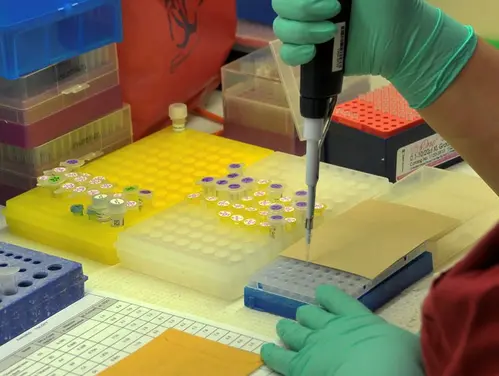The DNA Casework Section provides examinations to law enforcement agencies at no cost. Items from criminal cases are examined for the presence of human DNA. DNA can be found in biological fluids, tissues, and bones of the body. If DNA profiles are obtained from samples in question, comparisons may be made to known DNA profiles from individuals believed to be involved.
*Please fill out the DNA Case Information Form below when submitting DNA evidence.
